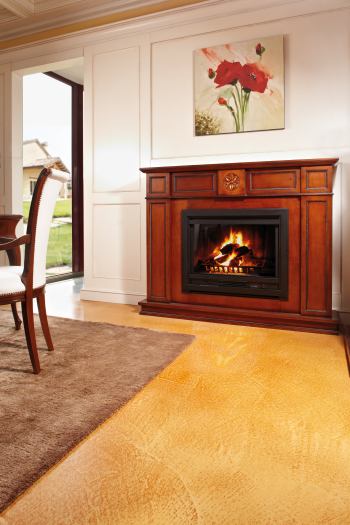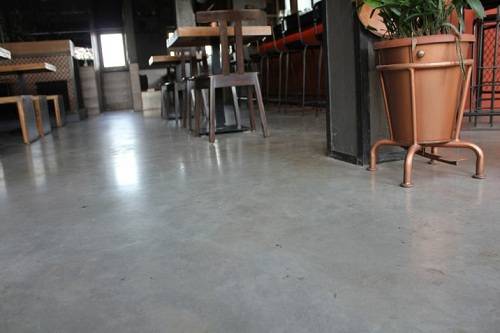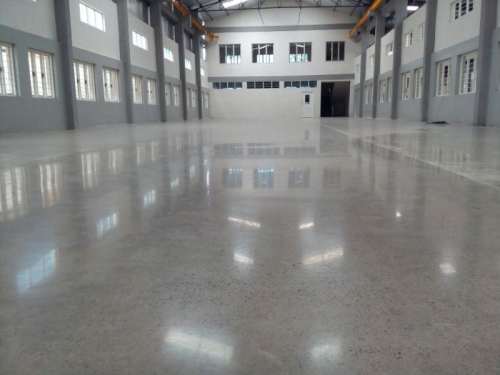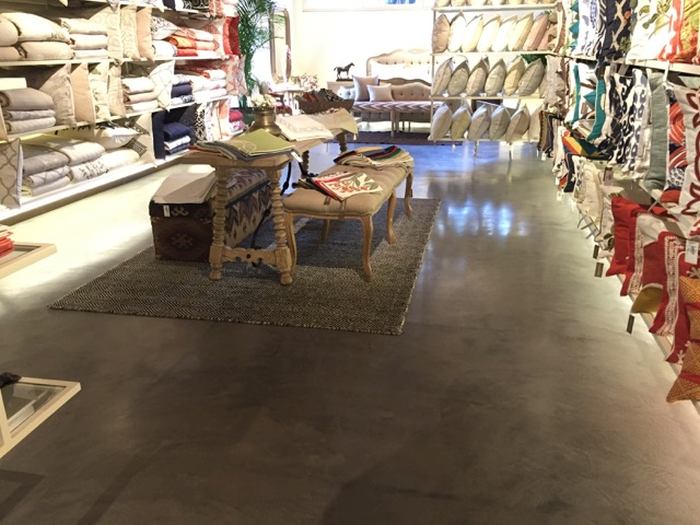Like all floors, concrete flooring has a number of advantages and disadvantages depending on where it is used. It is important to know the prons and cons of conrete floors so you can decide where to use it and where not to use it.
Concrete Flooring Advantages
Durable : Concrete floors are extremely stiff and able to withstand pressure from very heavy equipment such as cars, trucks, loaders, and folded crates. That's why it's such a popular material in hard-working commercial areas, such as garages and warehouses. Strength also means that the concrete floor is difficult to damage. The legs of furniture and the claws of pets will not scratch the surface. You also do not have to worry about damage from falling objects on the floor. Although scratching the surface of the concrete is possible, you must work very hard to succeed.
Easy To Maintain: Concrete floor covering will require minimal maintenance. It should be coated or waxed every 3 to 9 months, depending on the intensity of the movement, in order to maintain a protective layer above the surface. You can use neutral cleaners to wipe the floor periodically.
Environmentally Friendly: in most cases, the concrete base already exists under a different type of material and is below the level. This means that to form a concrete floor, in fact, you just need to remove everything that was placed on it. If new concrete laying is not performed, then carbon does not emit into the atmosphere.

Universal: As long as the concrete is smooth and free of holes, bumps, and defects, you have the option of mounting over it any coating that you want to lay in later. This gives you a lot of freedom for design. Note that the underlying layer may be required for installation of concrete and the material that you choose.
Long-Lasting : A properly protected flooring of this type can stand indefinitely. Even in commercial premises, it can survive in high traffic for many years. This allows you to save money, as well as preventing hassle over the periodic installation of new coatings.
Design options: When most people think of a concrete , they think about ugly gray surfaces with a sharp uneven texture. However, modern advances in the production of concrete allowed designers to achieve an infinite variety of colors and textures with this universal material. In some cases, the paint is added directly to the concrete mixture before the mixture is kneaded. You can already apply the already installed floor to the surface using the appropriate dye.
The texture of the concrete can be smooth when pouring the floor. Also, decorative patterns can be cut out on the floor when it is not yet frozen. You also have the option of polishing the material to form a gloss, or engraving it to create a tile effect.
Concrete flooring Disadvantages
Its Hard: The durability and strength of concrete can also be a disadvantage. The surface of the concrete floor is very hard. If you stumble and fall, you will probably harm yourself. Items that fall on this surface are likely to collapse or break. That is why these floors are not recommended for places that children or elderly people will often visit.
Inconvenience: The hardness of this material also makes it uncomfortable for standing for long periods of time. Concrete is not elastic, and if you are forced to stand on it for a long time, your feet will feel all the aggression of its hardness.
Coldness: Another disadvantage of concrete floors is that they do not tend to keep heat. This means that on a cold winter morning the floor surface will be cold for bare feet. This can be compensated to some extent by the use of carpets.
Susceptibleto Moisture : If the top and bottom surfaces are not well sealed, the concrete will be very susceptible to moisture penetration. If the liquid does break through into the pores of the concrete floor, it can stay there and lead to mold growth in your home. In some places, you also need to worry about the freezing of moisture that gets to the floor, which will lead to an expansion that eventually destroys the coating.
Environmentally Harmful: when using an existing concrete slab, the production of concrete products for a new floor may, in fact, have negative environmental consequences. This is due to the specificity of concrete to require significant energy and carbon dioxide in the process of solidification.



 Jointless floor coverings are becoming increasingly popular,
Jointless floor coverings are becoming increasingly popular,  Seamless flooring is the universal quality of all floors.They do not slip and do not smell.
Seamless flooring is the universal quality of all floors.They do not slip and do not smell.
 when laying a concrete floor in a house,
when laying a concrete floor in a house,  Seamless floors,
Seamless floors,  Moreover,
Moreover,  Advantages of Seamless flooring
Advantages of Seamless flooring
 It’s myriad features such as durability,
It’s myriad features such as durability,  Cons
Cons  MICROTOPPING
MICROTOPPING The abode area specialized or selected for any office is always a place that helps people in accommodating and progressing for the cause of the same.
The abode area specialized or selected for any office is always a place that helps people in accommodating and progressing for the cause of the same.